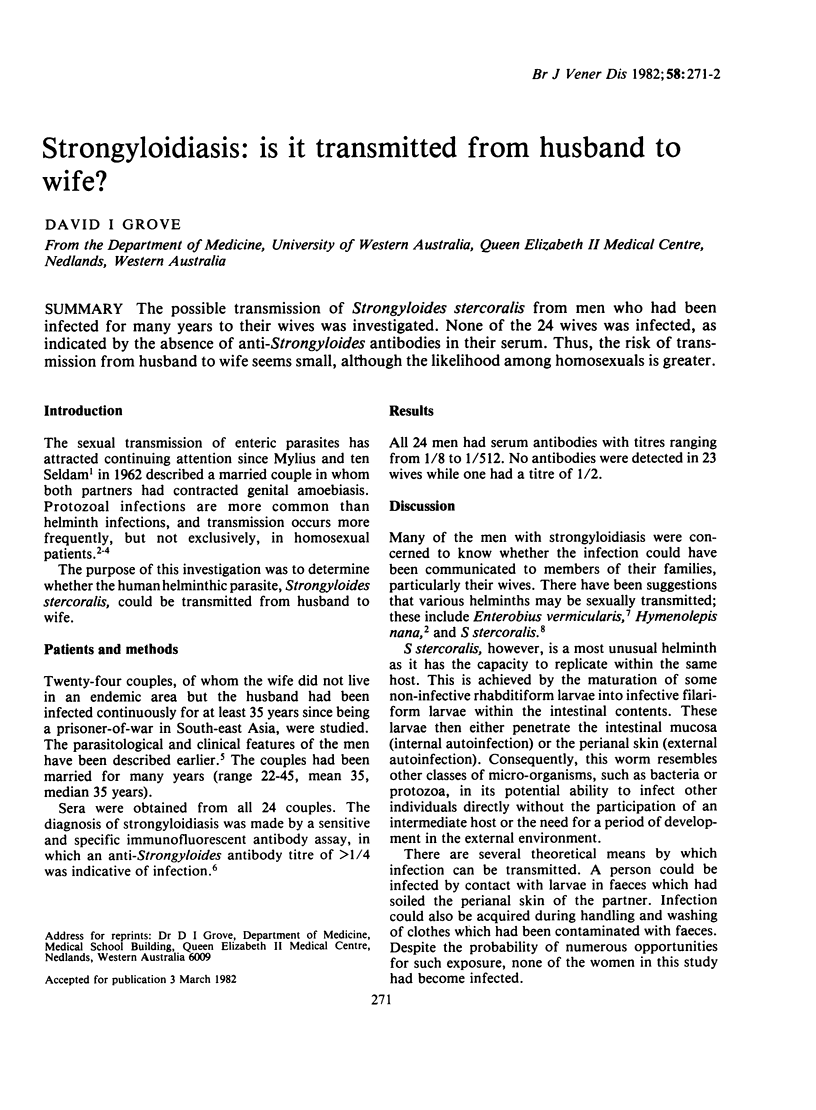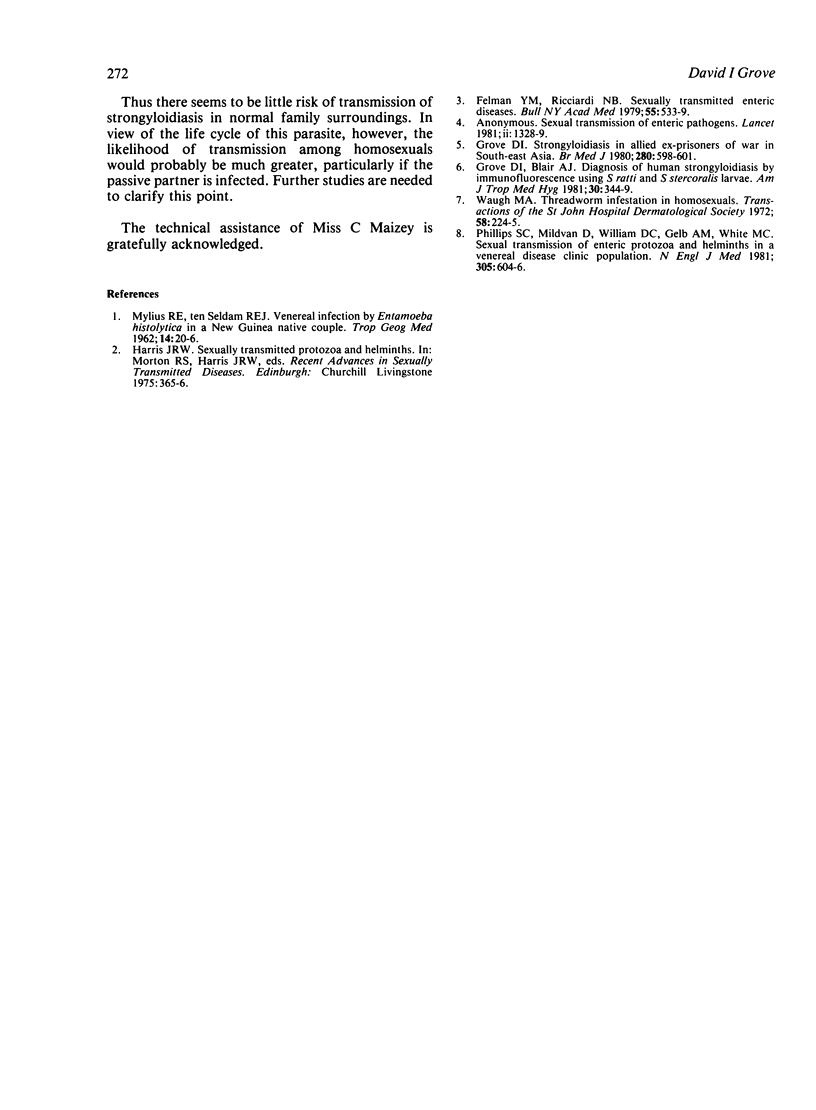Abstract
The possible transmission of Strongyloides stercoralis from men who had been infected for many years to their wives was investigated. None of the 24 wives was infected, as indicated by the absence of anti-Strongyloides antibodies in their serum. Thus, the risk of transmission from husband to wife seems small, although the likelihood among homosexuals is greater.
Full text
PDF

Selected References
These references are in PubMed. This may not be the complete list of references from this article.
- Felman Y. M., Ricciardi N. B. Sexually transmitted enteric diseases. Bull N Y Acad Med. 1979 Jun;55(6):533–539. [PMC free article] [PubMed] [Google Scholar]
- Grove D. I., Blair A. J. Diagnosis of human strongyloidiasis by immunofluorescence, using Strongyloides ratti and S. stercoralis larvae. Am J Trop Med Hyg. 1981 Mar;30(2):344–349. doi: 10.4269/ajtmh.1981.30.344. [DOI] [PubMed] [Google Scholar]
- Grove D. I. Strongyloidiasis in Allied ex-prisoners of war in south-east Asia. Br Med J. 1980 Mar 1;280(6214):598–601. doi: 10.1136/bmj.280.6214.598. [DOI] [PMC free article] [PubMed] [Google Scholar]
- Waugh M. A. Threadworm infestation in homosexuals. Trans St Johns Hosp Dermatol Soc. 1972;58(2):224–225. [PubMed] [Google Scholar]


